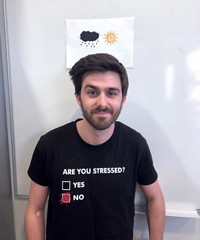Advertisement
Grab your lab coat. Let's get started
Welcome!
Welcome!
Create an account below to get 6 C&EN articles per month, receive newsletters and more - all free.
It seems this is your first time logging in online. Please enter the following information to continue.
As an ACS member you automatically get access to this site. All we need is few more details to create your reading experience.
Not you? Sign in with a different account.
Not you? Sign in with a different account.
ERROR 1
ERROR 1
ERROR 2
ERROR 2
ERROR 2
ERROR 2
ERROR 2
Password and Confirm password must match.
If you have an ACS member number, please enter it here so we can link this account to your membership. (optional)
ERROR 2
ACS values your privacy. By submitting your information, you are gaining access to C&EN and subscribing to our weekly newsletter. We use the information you provide to make your reading experience better, and we will never sell your data to third party members.
Synthesis
Reproducing Results
February 12, 2007
| A version of this story appeared in
Volume 85, Issue 7
I was glad to see the article "Weighing Reproducibility" and its observations that although reproducibility of experimental results is a primary factor in the establishment of "truth," this reproducibility is not always possible and frequently is attained only with great difficulty because of the need to have the experimental conditions equal (C&EN, Dec. 4, 2006, page 75). Over the years, I have witnessed examples of peoples' inability to reproduce others' results in quality-control testing. On careful examination, including watching technicians do the exact same tests side-by-side, one could see small differences in lab technique and manipulation that caused the diversity of the results.
Even in following thoroughly tested procedures such as those published in the series "Organic Syntheses," it is typical that the first time through, the results are likely to be dismal and the yield nowhere near those gotten by the authors and the checkers.
In the mid-1950s, as a grad student working for Marshall Gates at the University of Rochester, I happened into his lab while he was again working through his total synthesis of morphine, which had been published a year or two earlier. He mentioned that he believed that many people would have difficulty reproducing the particular synthetic step on which he was working. This is because he thought there was no way to write down the specific changes needed to be looked for as the reaction was proceeding. It was something that came with practice in doing the experiment, and it was tricky. This was my first real lesson that science is not always cut-and-dried. I had plenty of chances to learn this later when attempting to follow others' published syntheses.
Recently, I have been exposed to a great deal of work in marine biology as an author's editor. Reproducing much of this work would be nigh impossible because reproducing the exact experimental conditions is impossible, especially when working on gathering data in an open, and ever changing, sea.
I do not know the work that was being done by Bengu Sezen for Dalibor Sames at Columbia University, as described in the article. I do hope, however, that the investigation is being done thoroughly to make certain that it is not just the inability of others to achieve the exact experimental conditions that is causing the problem. Scientific fraud is never acceptable, but one wants to make certain that the fraud exists.
Ellis Glazier
La Paz, Mexico



Join the conversation
Contact the reporter
Submit a Letter to the Editor for publication
Engage with us on Twitter